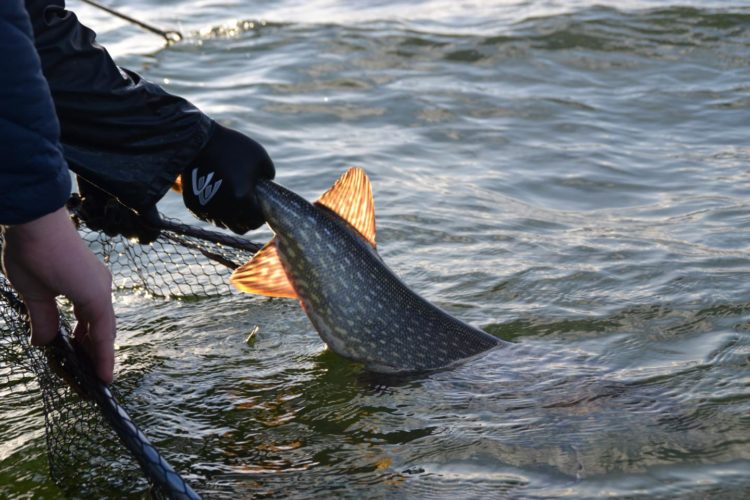Harvest slots protect fish stocks without compromising fisheries yield

Credit: Philipp Czapla
Measures against overfishing tend to protect young, immature fish through measures such as minimum-landing sizes. However, a team of researchers led by Professor Robert Arlinghaus from the Leibniz-Institute of Freshwater Ecology and Inland Fisheries (IGB) and the Humboldt-Universität zu Berlin recommends also keeping the particularly large megaspawners alive in addition to the youngsters. This type of management achieves good compromises between the demands of commercial and recreational fisheries and the desire to conserve the reproductive capacity of fish populations.
The aim of traditional fisheries management is to conserve the stocks being fished in the long term and at the same time to maximize biomass yields. Every wild fish should spawn at least once before it lands on our plate. Commercial and recreational fisheries are therefore not allowed to keep animals below a legally defined minimum size – the minimum-length limit. Large, mature specimens, by contrast, can be fished intensively. The key underlying assumption is that these animals have already contributed to the next generation and that the individual growth rate slows with age.
The fish must fit through the “window”
Fisheries professor Robert Arlinghaus from IGB and Humboldt-Universität zu Berlin worked with three fisheries biologists from the University of Florida and Vancouver to investigate the optimal size-based harvest regulations for a wide range of fish species such as pike, zander and cod, and whether it would be reasonable to also conserve the particularly large fish. These large fish are disproportionally fecund as they invest into reproduction and not personal growth. The researchers compared the effect of classical minimum-length limits with less popular harvest regulation – harvest slots. With the harvest slots, only medium-sized fish are taken home for dinner – figuratively speaking, only fish that fit exactly in the intermediate size window. All animals that reach over the frame or are too small should stay in the water to reproduce.
No fishing losses despite protection of the large spawning fish
The researchers found that if only the kilogramm yield that a wild exploited stock is to produce is to be maximized, a minimum-length limit is the appropriate regulation. However, other conservation and fisheries objectives usually also count. These include, for example, a naturally composed spawning fish stock, maintaining of catch rates or a certain size of fish in the catch. “Unfortunately, there is a persistent view that the protection of large spawning fish in an exploited fish stock is counterproductive to fishing and costs potential yield. Based on our work this is outdated. Protecting the large animals stabilizes the population dynamics without causing any relevant loss in yields and increases the average size of the fish in the catch. Harvest slots can outperform the classic minimum-length limit when intensively exploited stocks, such as the pike populations in the coastal waters around Rügen, are fished jointly by commercial and recreational fishers and the big fish are also important for nature conservation and fishing quality,” Robert Arlinghaus sums up the results.
The age diversity makes sense ecologically
Looking at the ecology, it becomes clear why the large spawning fish should not be missing in a population: a single particularly large female can compensate for the egg count of many small fish. Furthermore, fish of different sizes and ages reproduce at different times and often in different locations. If environmental events destroy the brood of a period, an age-mixed population can still ensure offspring and thus contribute to more stable populations. In addition, old and young have different habitats, migratory routes and feeding schedules, and young fish learn from the experienced leaders. And in many species mate choice also depends on the length of fish.
“If, through intensive fishing, a fish population is created in which predominantly young fish that have just reached sexual maturity are represented, this has a negative effect on many levels: on the reproductive performance of the stock, on the food web and the ecosystem – and also on the quality of the fishery,” concludes Robert Arlinghaus.
###
Media Contact
Dr. Robert Arlinghaus
[email protected]
49-306-418-1653
Original Source
https:/
Related Journal Article
http://dx.





